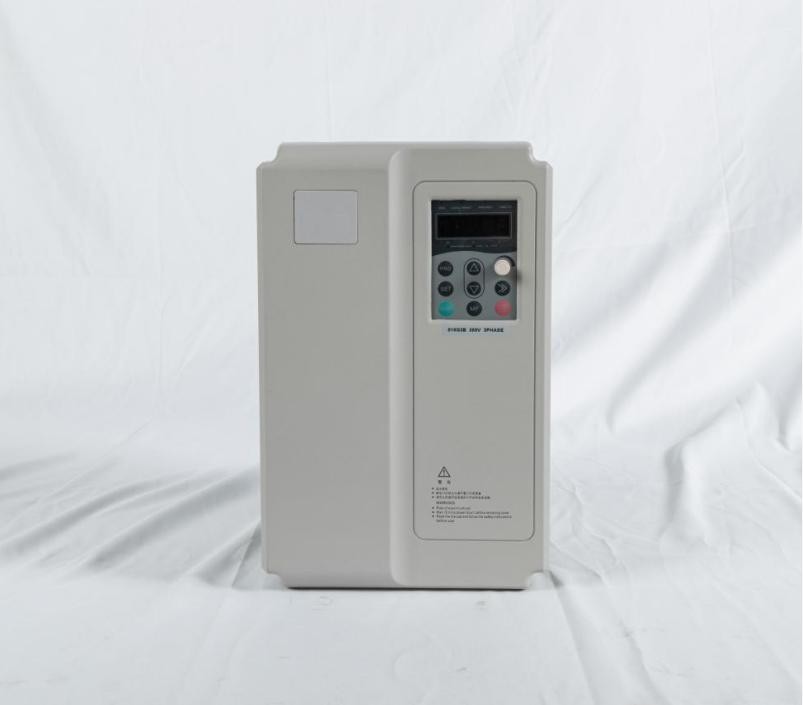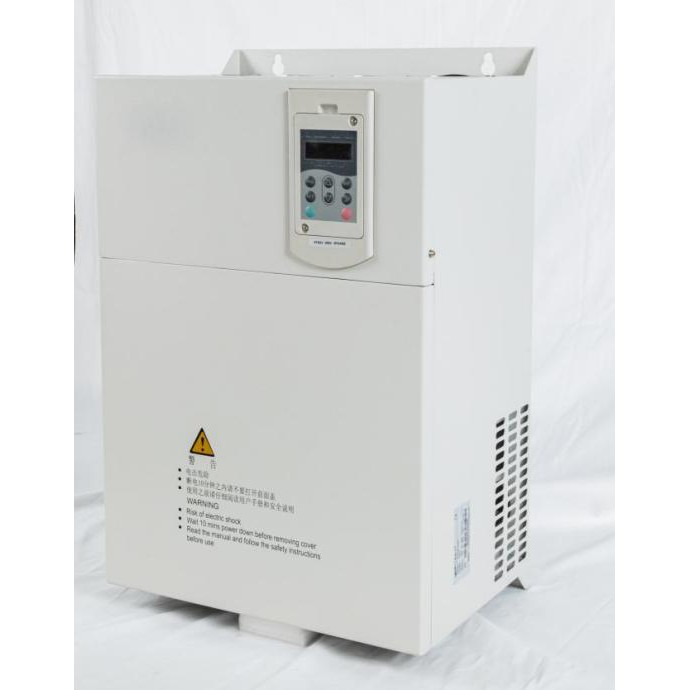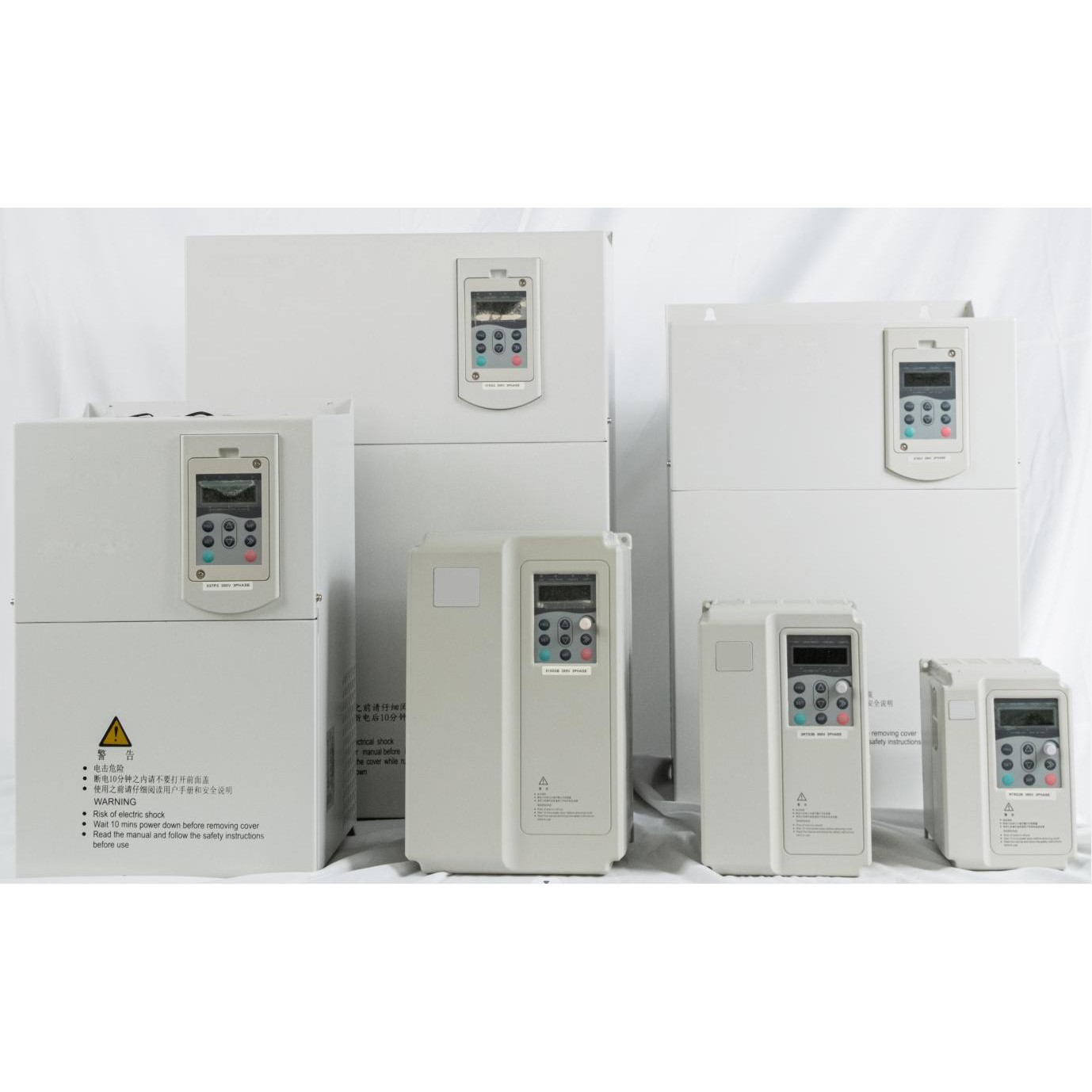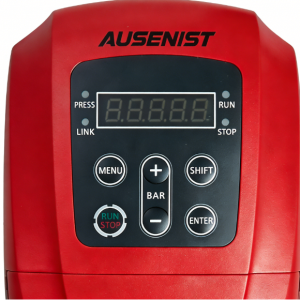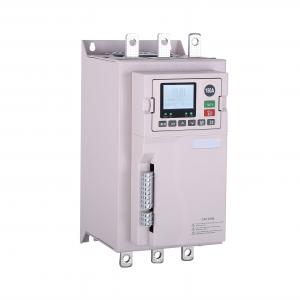AU1000 series concludes below improvement & innovation based on the ordinary V/F inverter.
With the high-end design and high qualityand reliability, AU1000 series inverter will bring the users all new experience.
Features:
1. Simplified parameter for easy start up
2. Comprehensive trip diagnostics
3. High start torque 180%/0Hz at FVC
4. Automatic torque boost
5. Slip compensation
6. Flexible programmable I/O connection
7. Output frequency 0~300Hz
8. In-built dynamic braking unit
9. To protect the mechanical torque limitation
10. High starting torque feature.
11. Superior responsiveness
12. Motor overheating protection
13. Prompt current limit function

Item | Specifications | ||
Standard functions
| Maximum frequency | • Vector control: 0–300 Hz• V/F control: 0–320 Hz | |
Carrier Frequency | 0.5–16 kHz The carrier frequency is automatically adjusted based on the load features. | ||
Input frequency Resolution | Digital setting: 0.01 Hz Analog setting: maximum frequency x 0.025% | ||
Control mode | • Sensorless flux vector control (SFVC) • Closed-loop vector control (CLVC) • Voltage/Frequency (V/F) control | ||
Startup torque | • G type: 0.5 Hz/150% (SFVC); 0 Hz/180% (CLVC) • P type: 0.5 Hz/100% | ||
Speed range | 1:100 (SVC) | 1:1000 (FVC) | |
Speed stability Accuracy | ±0.5% (SVC) | ±0.02% (FVC) | |
Torque control Accuracy | ±5% (FVC) | ||
Overload capacity | • G type: 60sor 150% of the rated current, 3s for 180% of the rated current • P type: 60s for 120% of the rated current, 3s for 150% of the rated current | ||
Torque boost | • Fixed boost• Customized boost 0.1%–30.0% | ||
V/F curve | • Straight-line V/F curve• Multi-point V/F curve • N-power V/F curve (1.2-power, 1.4-power, 1.6-power,1.8-power,square) | ||
V/F separation | Two types: complete separation; half separation | ||
Ramp mode | • Straight-line ramp• S-curve ramp Four groups of acceleration/deceleration time with the range of 0.0–6500.0s | ||
DC braking | DC braking frequency: 0.00 Hz to maximum frequency Braking time: 0.0–36.0s Braking action current value: 0.0%–100.0% | ||
JOG control | JOG frequency range: 0.00–50.00 Hz JOG acceleration/deceleration time: 0.0–6500.0s | ||
Onboard multiple preset speeds | It implements up to 16 speeds via the simple PLC function or combination of X terminal states. | ||
Onboard PID | It realizes process-controlled closed loop control system easily. | ||
Auto voltage regulation (AVR) | It can keep constant output voltage automatically when the mains voltage changes. | ||
Over voltage/ Over current stall Control | The current and voltage are limited automatically during the running process so as to avoid frequent tripping due to over voltage/over current. | ||
Fast current limiting function | Minimizing over-current fault protect the normal operation of the inverter | ||
Torque limit and control | It can limit the torque automatically and prevent frequent over current tripping during the running process. Torque control can be implemented in the CLVC mode. | ||
Individualized functions | High performance | Control of asynchronous motor and synchronous motor are implemented through the high-performance current vector control technology. | |
Power dip ride Through | The load feedback energy compensates the voltage reduction so that the AC drive can continue to run for a short time. | ||
Rapid current limit | It helps to avoid frequent over current faults of the AC drive. | ||
Virtual I/Os
| Five groups of virtual DI/Dos can realize simple logic control. | ||
Timing control | Time range: 0.0–6500.0 minutes | ||
Multi-motor switchover | Four motors can be switched over via four groups of motor parameters. | ||
Multiple communication Protocols | It supports communication via Modbus –RTU, PROFIBUSDP, CAN link and CAN open. | ||
Motor overheat Protection | The optional I/O extension card enables AI3 to receive the motor temperature sensor input (PT100, PT1000) so as to realize motor overheat protection. | ||
Multiple encoder Types | It supports various encoders such as differential encoder, open-collector encoder, resolver, UVW encoder, and SIN/COS encoder. | ||
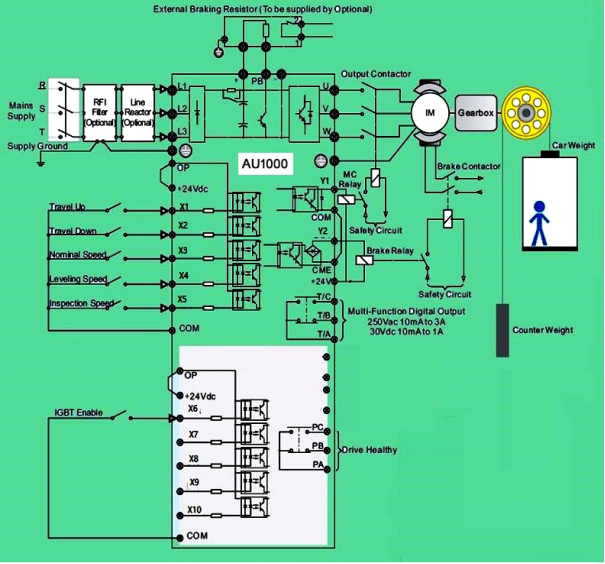
 Quanzhou Ausenist Technology Co., Ltd
Quanzhou Ausenist Technology Co., Ltd 